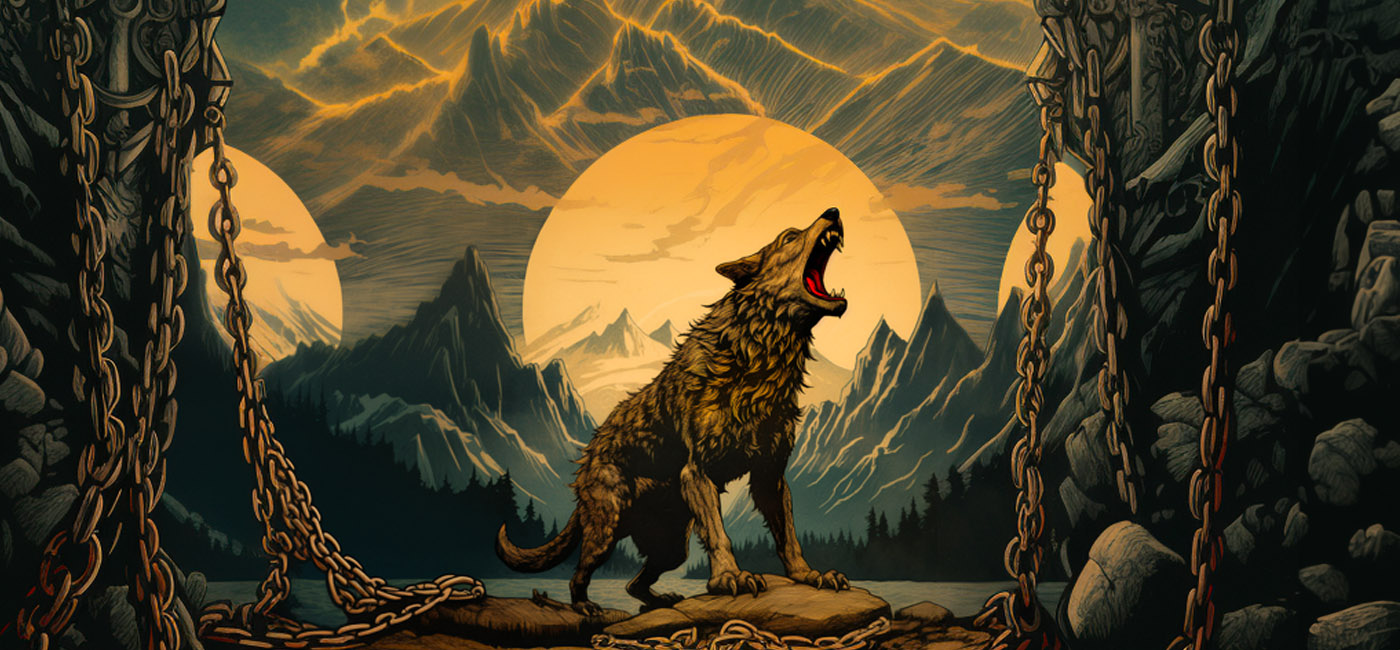
Fenrir (“He Who Dwells in the Marshes” in Old Norse) is the most infamous of the many wolves in Norse mythology, and the namesake of Fenrir…
It was a dark and ancient time, when gods and monsters roamed the earth together. One of the greatest monsters was Fenrir, a gigantic wolf who had grown so powerful that even the gods feared him. They knew that Fenrir’s strength would only continue to grow, and that eventually he would pose a threat to all of creation.

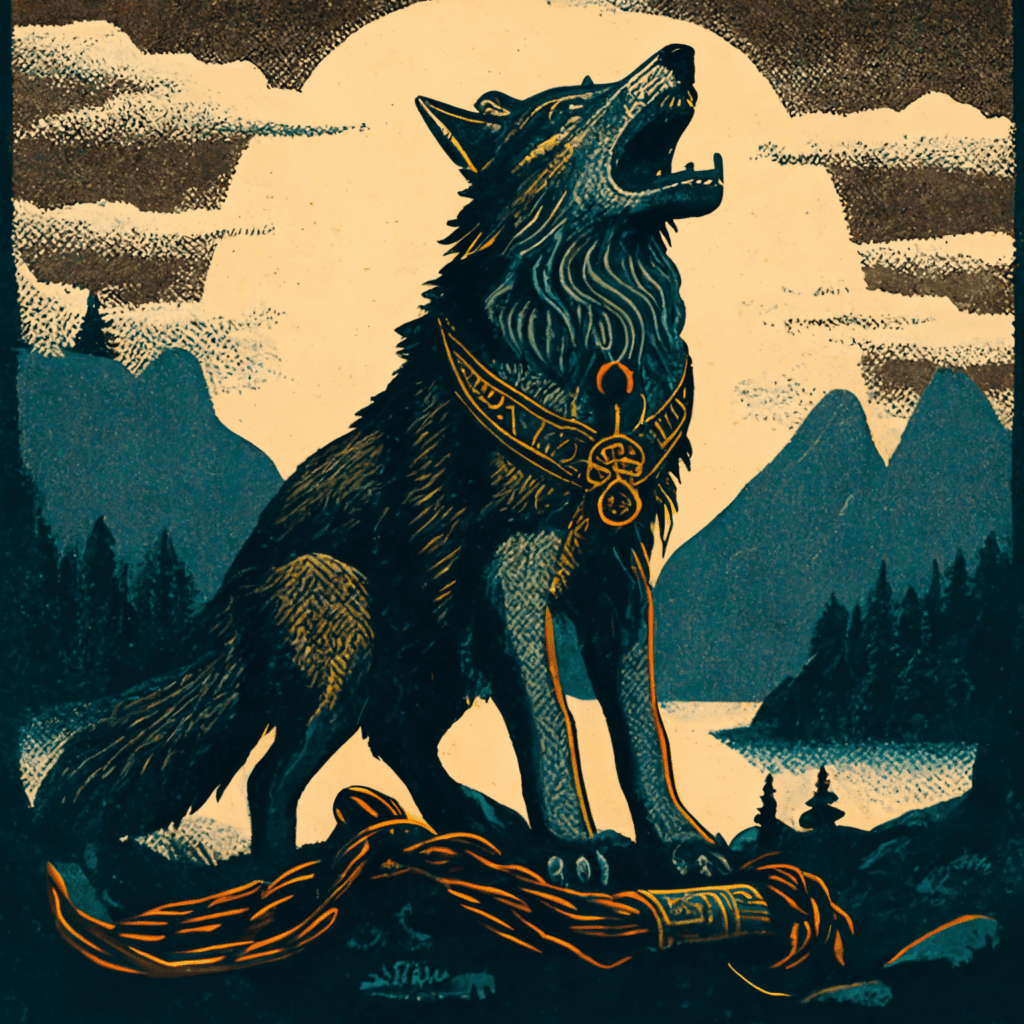
The gods decided that they must bind Fenrir, to prevent him from causing harm. But they knew that Fenrir was no ordinary beast, and that he would not be easily subdued. They tried to trick him with a series of chains, each one stronger than the last, but Fenrir broke them all with ease.
Finally, the gods turned to the blacksmiths of their realm to create a chain that would be unbreakable. They fashioned a chain made from six impossible things: the sound of a cat’s footfall, the roots of a mountain, the breath of a fish, the sinews of a bear, the spit of a bird, and the beard of a woman.
The gods brought this unbreakable chain to Fenrir, who was wary but willing to be bound if one of the gods would put their hand in his mouth as a sign of good faith. Only the god Tyr, who was known for his bravery, was willing to make this sacrifice. Fenrir allowed himself to be bound, but when he realised that he could not break free, he howled with rage and bit off Tyr’s hand.
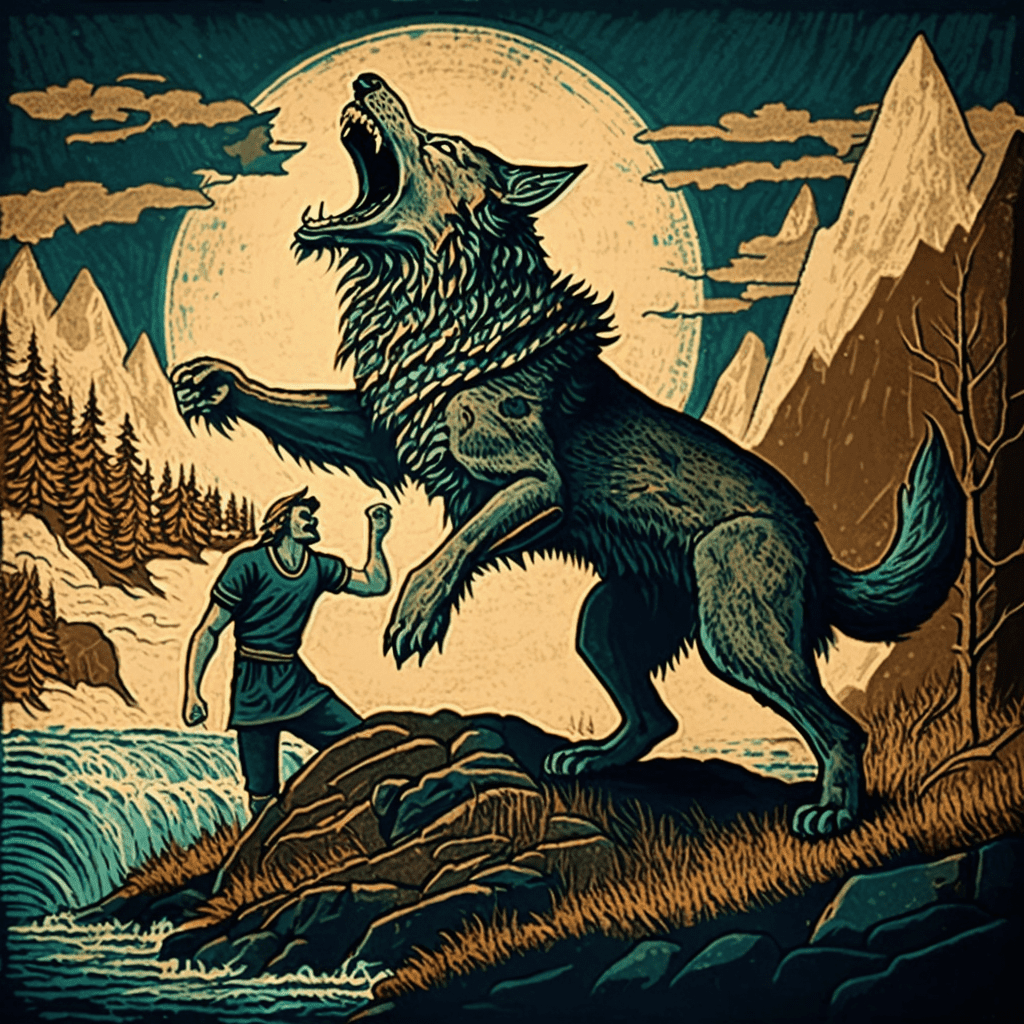
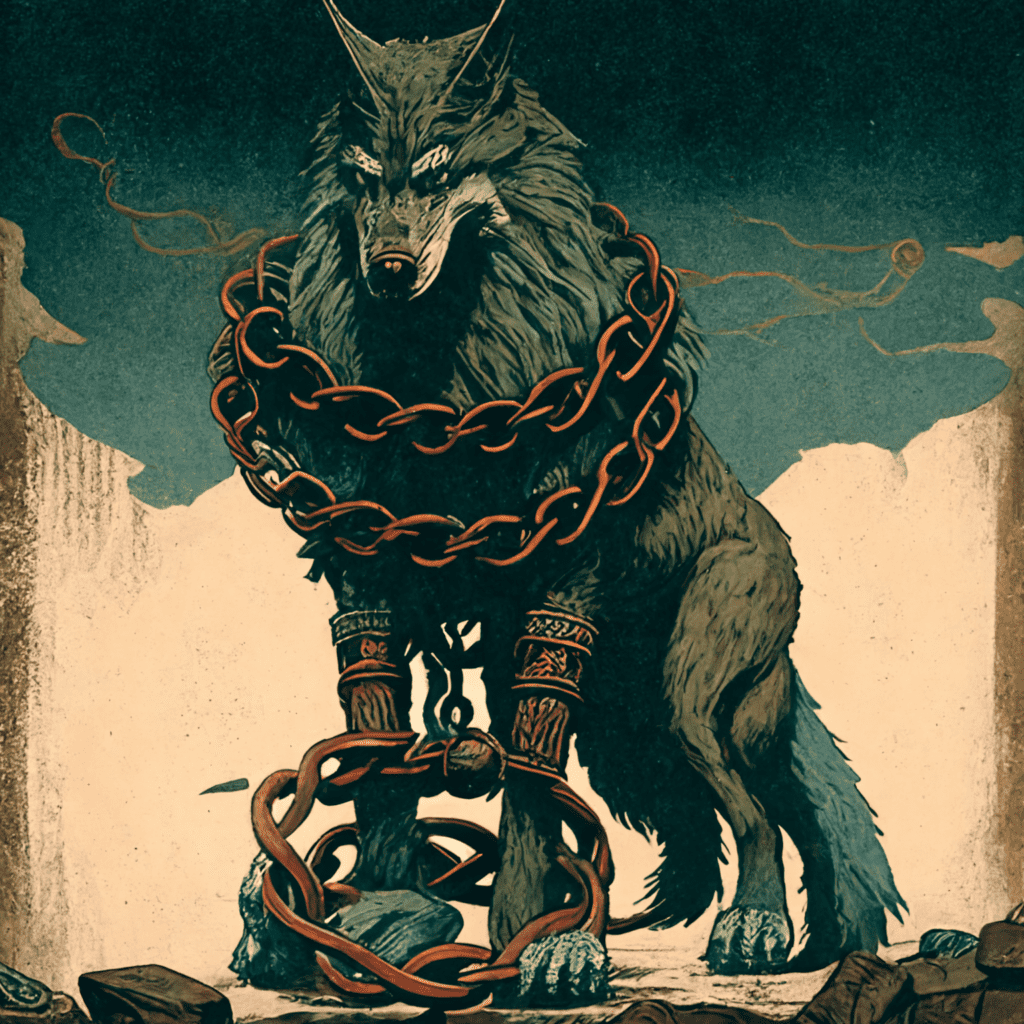
From that day on, Fenrir was bound to a rock, with the unbreakable chain wrapped tightly around him. He would remain there until the end of the world, when he would finally break free and wreak havoc on the earth once more.
The Binding of Fenrir was a great victory for the gods, but it was also a reminder of the dangers that lurked in the world. For even the greatest of monsters could be subdued, but never truly destroyed.
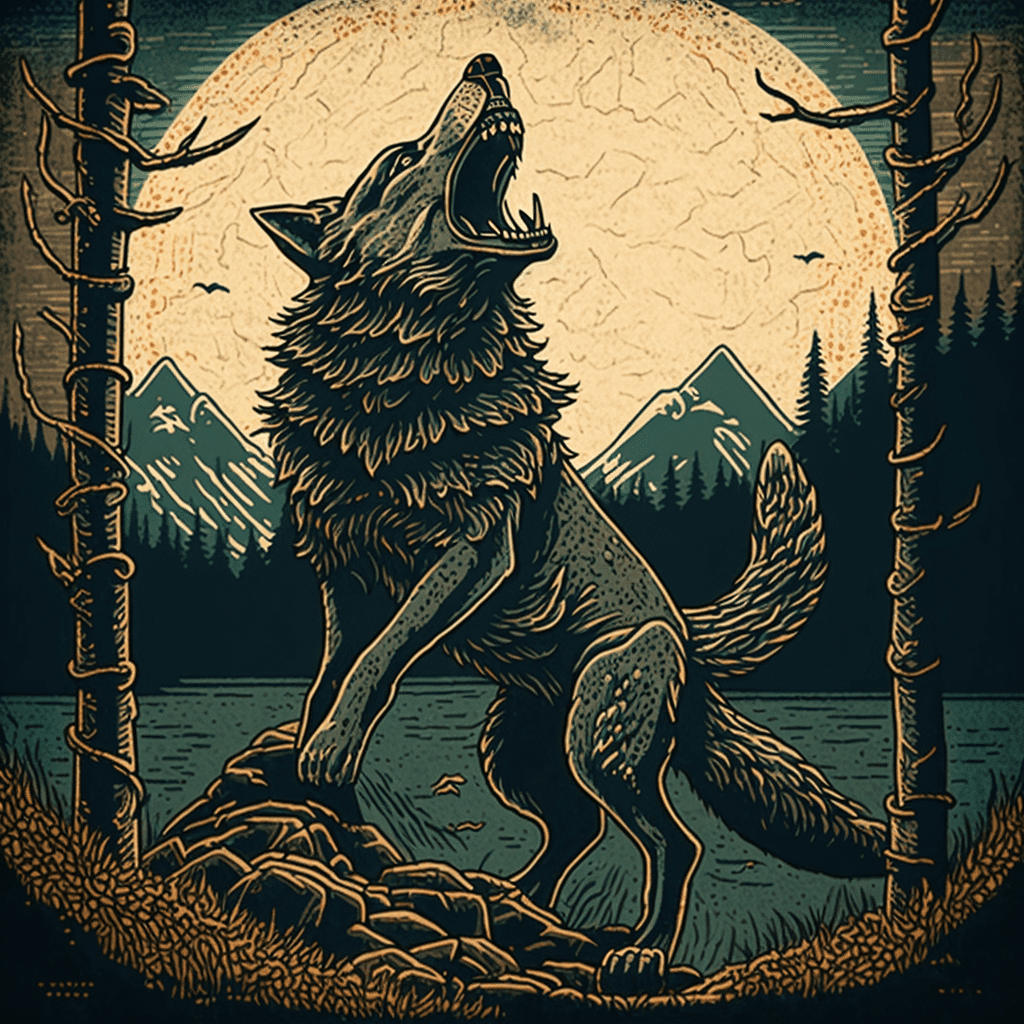
About Fenrir
Fenrir, also known as Fenrisúlfr (translated as “Fenrir’s wolf” or “Fenris-wolf”), is a prominent figure in Norse mythology. Referred to as Hróðvitnir (meaning “fame-wolf”) and Vánagandr (translated as ‘monster of the [River] Ván’), Fenrir is a wolf, one of the offspring of the trickster god Loki and the giantess Angrboða. This significant creature is mentioned in the Poetic Edda, a compilation of ancient Norse texts, as well as in the Prose Edda and Heimskringla, both written by Snorri Sturluson in the 13th century.
In Norse mythology, Fenrir plays a vital role. He is the father of Sköll and Hati Hróðvitnisson, two wolves foretold to chase the sun and moon during Ragnarök, the end of the world in Norse cosmology. Fenrir himself is destined to kill Odin, the chief of the gods, during these cataclysmic events, only to be slain by Odin’s son Víðarr.
Fenrir’s binding is a well-known tale. The gods, fearing his potential for destruction due to his rapid growth, decided to bind him. They created a powerful fetter called Gleipnir, made from mystical ingredients, including the sound of a cat’s footsteps, a woman’s beard, and the roots of a mountain, among others. To trick Fenrir into wearing Gleipnir, the gods told him it was a test of his strength. Fenrir agreed to be bound but suspected deceit. He demanded that one of the gods place a hand in his mouth as a sign of good faith. Brave Týr, the god of war, volunteered and lost his hand when Fenrir realized he was trapped.
Fenrir’s fate is sealed in various sources. He will break free during Ragnarök, resulting in a great battle where he swallows Odin but is ultimately killed by Víðarr.
Throughout history, Fenrir has been depicted in various forms of art and literature. His story has inspired poets, writers, and artists, leading to diverse interpretations of this formidable wolf in both ancient and modern contexts.